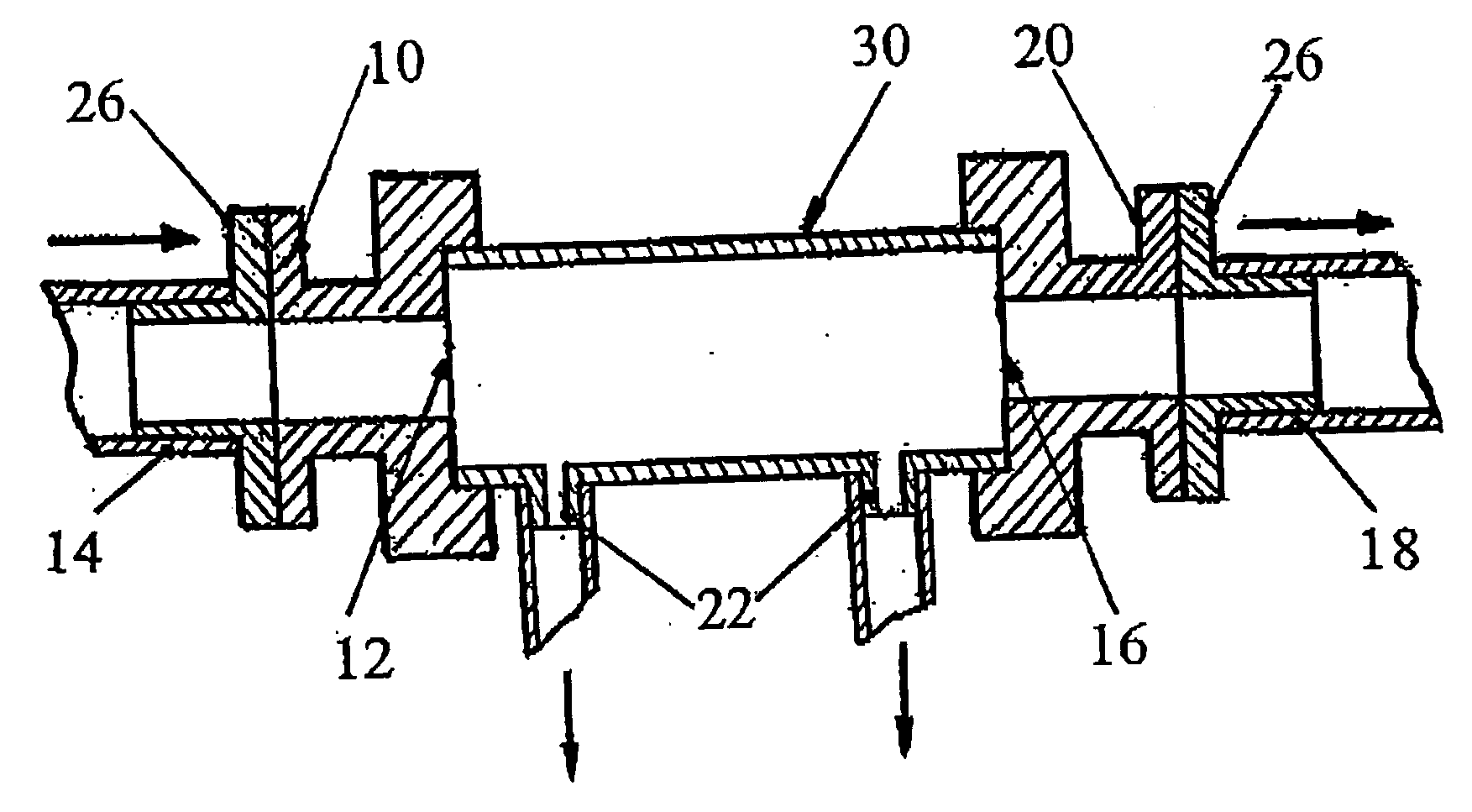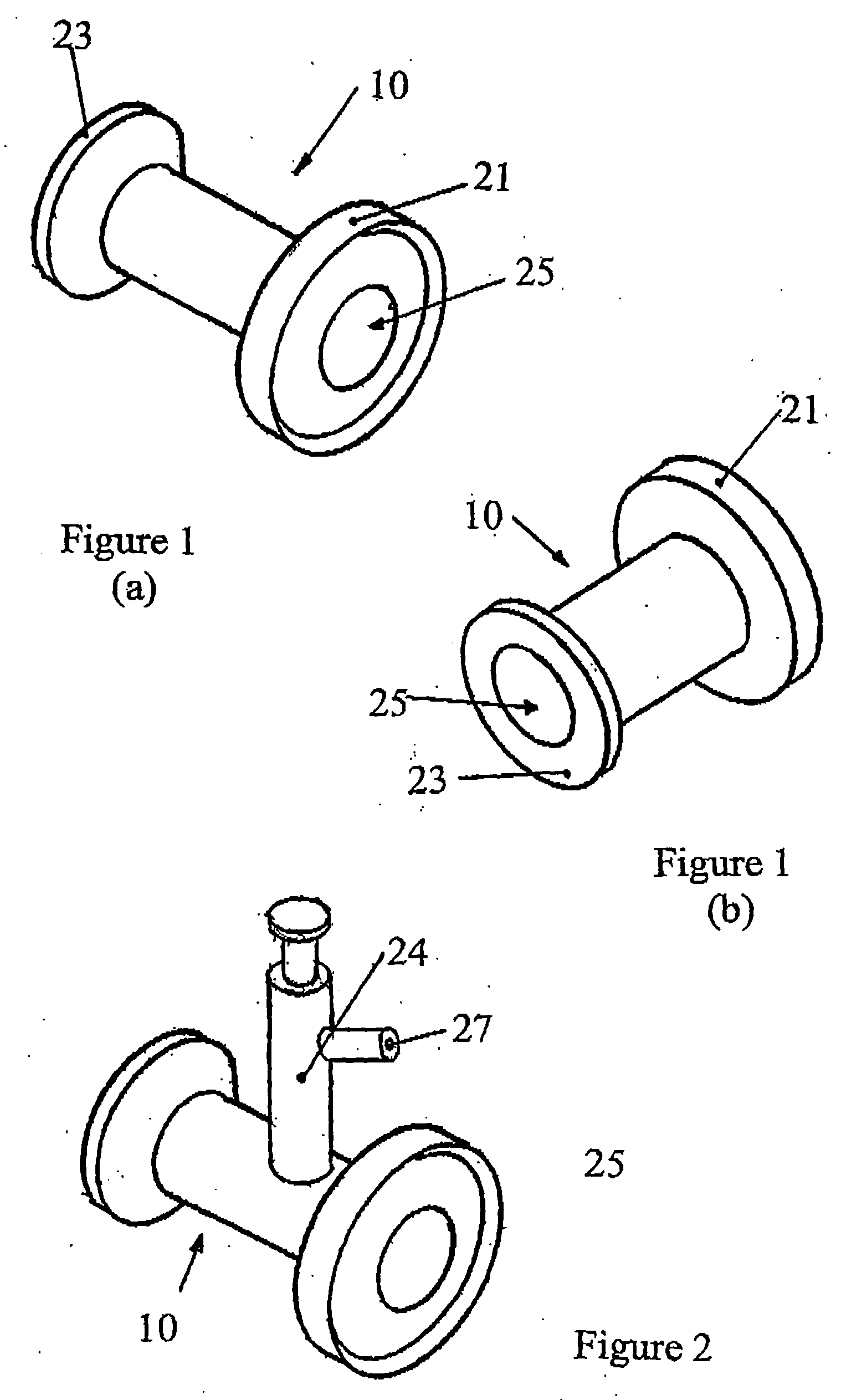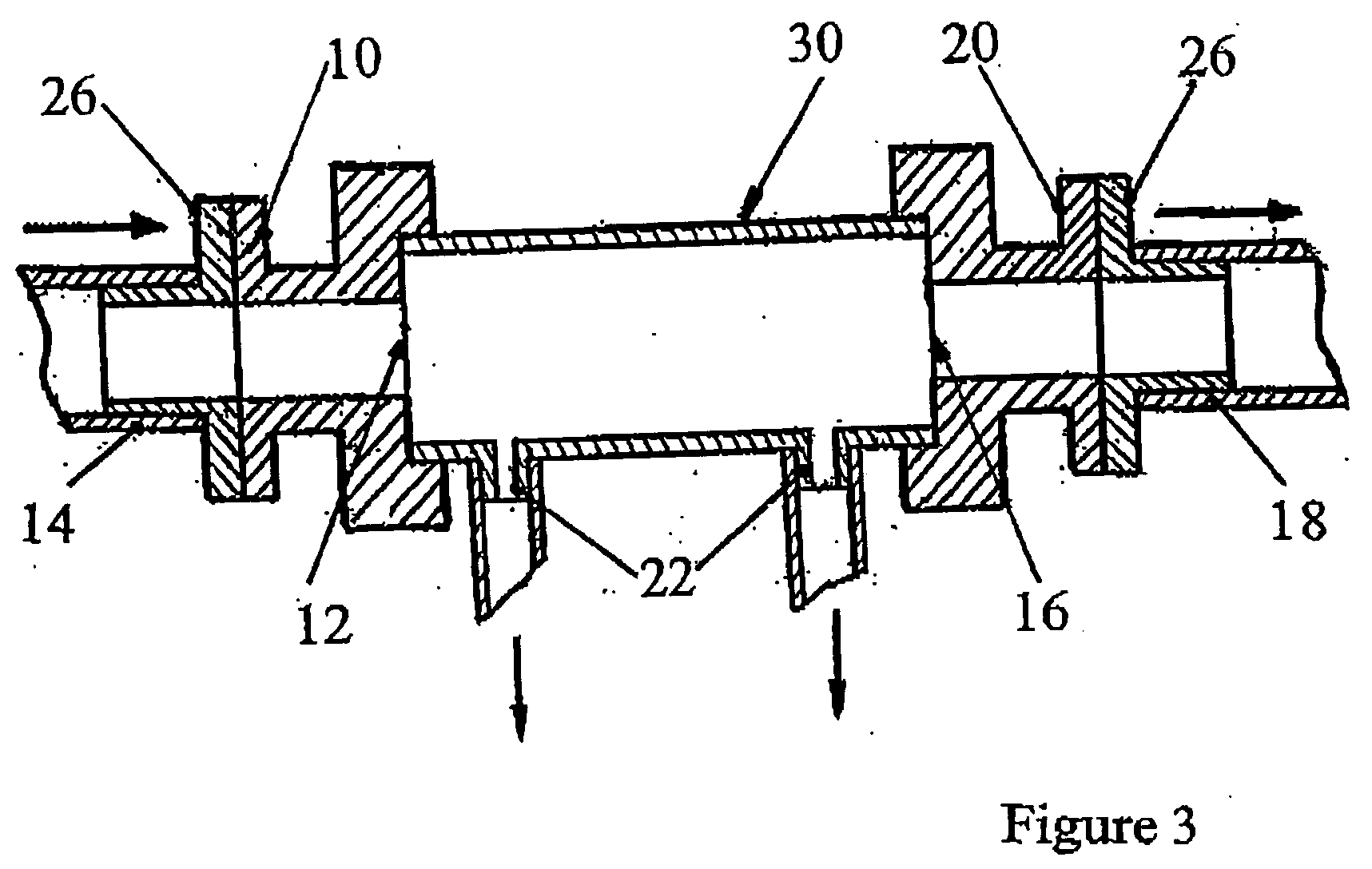Viral concentration process
a technology of virus and concentration process, applied in biochemistry apparatus and processes, filtration circuits, etc., can solve the problems of introducing the risk of contamination of the work place, exposing analysts to live viruses, and adding time and cos
- Summary
- Abstract
- Description
- Claims
- Application Information
AI Technical Summary
Benefits of technology
Problems solved by technology
Method used
Image
Examples
example
In the present example, the arrangement as shown in FIG. 4 is used for isolating and detecting a virus from a finite liquid sample supply, wherein the virus includes those of the group of enterovirus, Hepatitis A, rotavirus, Noroviruses astrovirus, reovirus, and adenovirus.
Example Parameters and Overview
The above method and apparatus is used for the detection and concentration of a virus from a large volume of water sample, for example of about 10-1000 litres using ultra filtration. The water samples are processed using a Peristaltic pumping system and a Hemoflow HF80S Hemodialysis disposable hollow fibre filtration cartridge (Fresenius Medical Care AG). The method used is a NATA accredited method for water, in the field of microbiological testing under the classes of test “8.70 waters including effluents”, 0.51 (potable waters), 0.52 (industrial waters), 0.55 (swimming pools and spas) and 0.56 (environmental waters). The three stage method for viral detection and environmental...
PUM
| Property | Measurement | Unit |
|---|---|---|
| Pressure | aaaaa | aaaaa |
| Flow rate | aaaaa | aaaaa |
| Flow rate | aaaaa | aaaaa |
Abstract
Description
Claims
Application Information
 Login to View More
Login to View More - R&D
- Intellectual Property
- Life Sciences
- Materials
- Tech Scout
- Unparalleled Data Quality
- Higher Quality Content
- 60% Fewer Hallucinations
Browse by: Latest US Patents, China's latest patents, Technical Efficacy Thesaurus, Application Domain, Technology Topic, Popular Technical Reports.
© 2025 PatSnap. All rights reserved.Legal|Privacy policy|Modern Slavery Act Transparency Statement|Sitemap|About US| Contact US: help@patsnap.com



